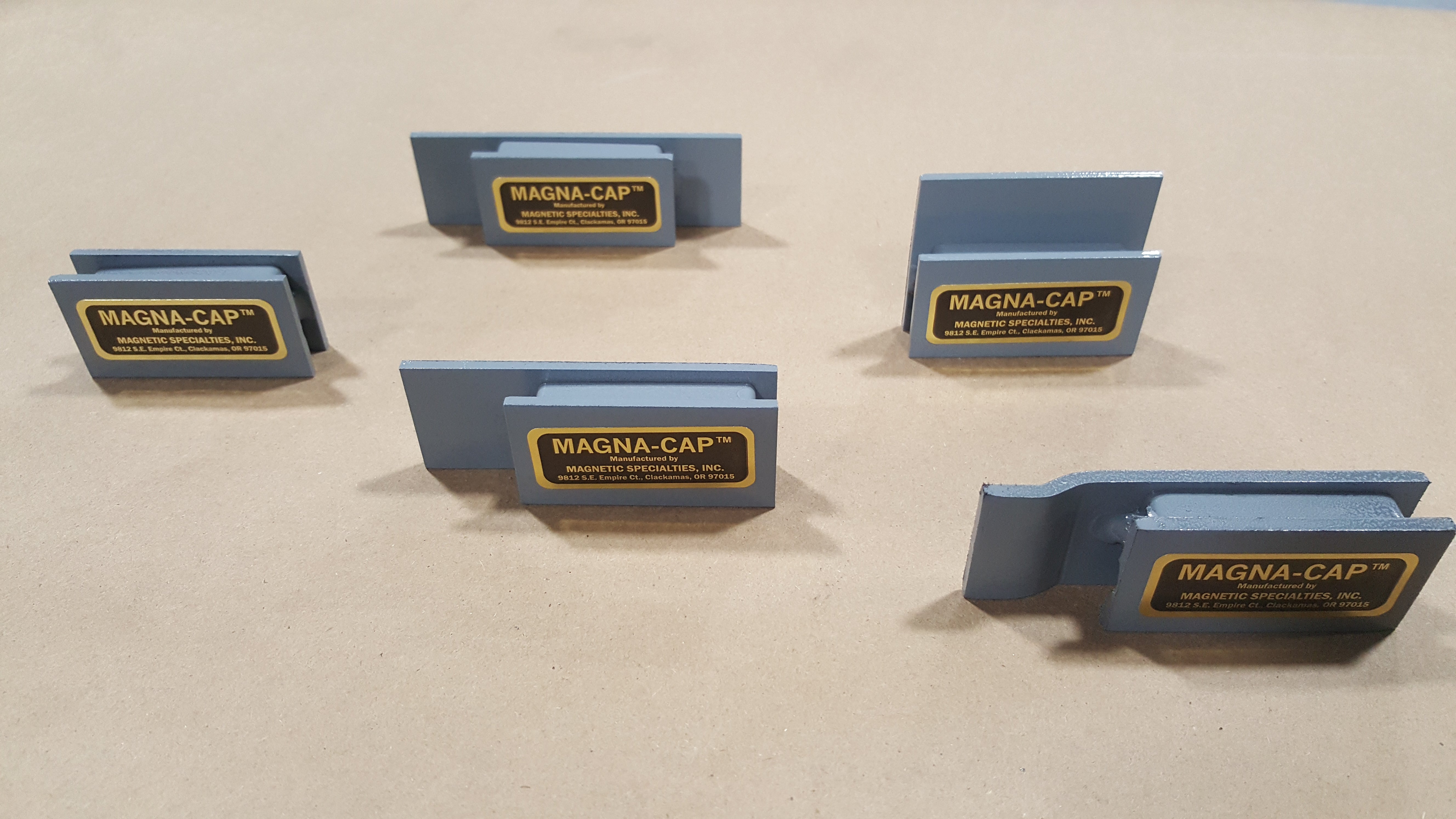What Are Lifting Magnets Made Of?

What kinds of materials are used in making magnets? How do we select the magnets that power lifting magnets such as our Magnetic Specialties Model 1037?
It takes a lot more power to lift 2,500 pounds of steel plate than can be found in a steel or iron compass needle, that’s for sure. Magnetic materials used these days fall into four groups: Alnico, Ceramic (Ferrite), Samarium-Cobalt, and Neodymium. Each has its own characteristics, advantages and disadvantages.
Alnico magnets are made from iron alloyed primarily with aluminum, nickel, and cobalt, thus the name, though they can also include copper or titanium, and these magnets have been around since the 1930s. While not the strongest magnets when compared to rare earth magnets, they have the highest range of operating temperatures. As temperature increases, magnets begin to lose strength, and when the temperature reaches the Curie temperature for that magnetic material, they lose all magnetization and become useless as magnets until remagnetized. The Curie temperatures for Alnico magnets are the highest, in the range of 800° C and with a maximum normal operating temperature in the range of 500° C. Depending on the exact Alnico alloy, Alnico magnets can be isotropic, able to be magnetized in any direction, while others are anositropic, having a preferred direction of magnetization. They are less resistant to corrosion than the rare earth magnets, but not so much as the ferrites. Though the oldest of the four categories of magnets listed above, their combination of strength and thermal characteristics makes them still relevant today, and they are used in such areas as the manufacture of guitar pickups, electric motors, microphones, sensors, and loudspeakers.
Ceramic magnets (Ferrite magnets) were also originally developed in the 1930s, with technological advances increasing their magnetic strength to the levels we see today. They are made from iron (III) oxide mixed with other elements such as strontium, barium, manganese, nickel, or zinc, and are strong, very resistant to corrosion, retain their magnetism very well, and economical of cost. This combination of factors makes ceramic magnets the magnet of choice for applications such our Model 1057 lifting magnet, able to lift up to 2500 pounds of steel plate, as well as for magnetic sign capping with our Magna Caps. Unusually compared to other ferromagnetic materials, ferrite magnets are not conductors of electricity. They have a good operating temperature range, though with a Curie temperature in the range of 450° C not to the level of Alnico magnets. Due to the combination of cost and power, ceramic magnets see wide applications industrially in lifting and separating, and because of their lack of electrical conductivity, find use in transformers and even electromagnets to control eddy current losses. The core memory of early computers was made with ferrite cores, and ferrite particles and powder are even used in magnetic recording tape as well as in radar-absorbing stealth technology.
Neodymium magnets are the magnets people usually mean when they speak of rare earth magnets, though there are actually 17 rare earth elements, and samarium-cobalt magnets are also rare earth magnets. They have the highest strength for their size, of all the types of magnets you can buy today, which makes them the choice when power is the only consideration, but they have significant disadvantages as well. They were discovered in the 1980s independently by General Motors and by Sumitomo Special Metals and are available in several grades of strength, from N28 to N52 (the strongest). All are anisotropic, strongly having a preferred direction of magnetization and difficult to magnetize in other directions. They tend to be vulnerable to corrosion and are thus often covered with a protective coat. Neodymium magnets are very costly, and not generally suitable for high-temperature applications due to their lowish Curie temperatures, in the 300-400° C range. Even with these disadvantages however they find wide usage, in applications from electric motors and computer hard drives to magnetic bearings and loudspeakers.
Samarium-Cobalt magnets are our final class of magnets, and they, like neodymium magnets, belong to the category of rare earth magnets. Like neodymium magnets they are quite strong, though not quite so much so as the neodymium. When you add in the fact that they are also brittle, like neodymium magnets, but are even more costly, you might think that there is no reason for using them, but they do have one large advantage over neodymium, and that is the operating range of temperatures, with Curie temperatures in the range of 700-800° C, about twice as high as for neodymium.
At Magnetic Specialties, we have dealt with all of these from the ceramic magnets utilized in our Model 1037, 1037jr, and other lifting magnets, to custom-designed neodymium applications. For smaller parts-handling solutions, try our Model 790 hand magnet!






